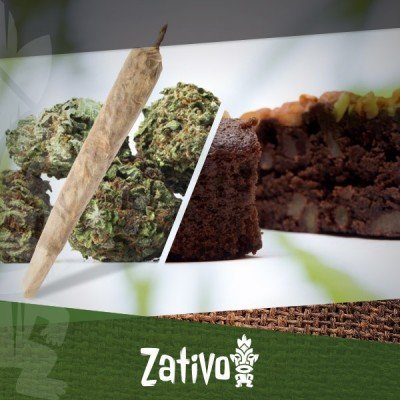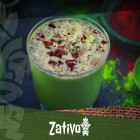Don't have an account?
Register NowYou have to add to cart at least 5 bottles or any program to make checkout.
- BlogThe Difference Between Eating and Smoking Weed
The Difference Between Eating and Smoking Weed
Published: March 3rd, 2017
Categories:
Cannabis Info • Cooking With Cannabis
While the stereotype of cannabis users is one where they light up a joint (or more recently, fire up a vaporizer), the reality is that consuming the drug in form of an edible has always been a popular option for those in the know.
As cannabis use becomes more accepted, not to mention more legal, the understanding and knowledge of as well as access to premade edible products is increasing. In fact, in the United States (for example) edibles' sales were about on par with inhalable cannabis products as soon as both Colorado and Washington state legalized recreational use.
That said, smoking and eating weed are different.
WHAT ARE THE DIFFERENCES?
As those who have fought for the right to smoke or vape medically will tell you, smoking or inhaling marijuana is the quickest way to feel its effects. The impact of smoking or vaping is felt within the first minutes after consumption.
The first thing you should know about consuming marijuana in an edible form is that effects take longer to kick in. It can take between half an hour and an hour and a half for cannabis consumed orally to have an effect (and that is when you are consuming it on an empty stomach). The effects of edibles, however, also last much longer than smoking cannabis (up to three or four hours). That is why novice edible consumers should absolutely go slow – and if consuming a pre-packaged product, do not exceed recommended serving sizes.
The other differences that users are likely to experience, particularly if they have only smoked marijuana, are that the energetic and sedative differences between sativa and indica strains are usually not present in edibles. This is because of processing techniques, that include making edibles from a mix of sources. Some commercial manufacturers do market brands made exclusively from one strain of cannabis, but most make edible products from, literally, the mixed leftover trimmings of what cannot be sold to consumers or markets for other purposes.
The other variable in all of this is new products, that are being introduced to the market in the form of hard candies and lozenges. These products fall into a hybrid category of impact. They do not work as fast as smoked or inhaled cannabis, but tend to work a little faster than eating products infused with pot.
WHAT ARE THE BENEFITS?
Apart from not having to deal with either the smoke or the smell that smoked cannabis creates, the “high” that users experience by eating marijuana is more of a “body” rather than “mind” high. That is why so many medical users, in particular, are turning to this form of consumption.
Edibles are one of the best ways to consume cannabis if you are seeking relief from conditions that include both chronic pain and muscle contractions caused by many movement disorders.
HOW EASY IS IT TO COOK WITH MARIJUANA?
It takes quite a bit of practice to cook with marijuana and obtain good results. That is why edibles beginners should try to experiment with pre-packaged goods if available to them. Cooking with weed consumes more of it than smoking it – and novice users should be prepared to lose a few batches before they get the hang of such techniques.
When cooking with marijuana, the first thing to understand is that to get the most bang for your buck, you must first maximize the amount of THC that you will get from your efforts.
To do this, you must first "decarboxylate" your supply to remove a carboxylic acid group from the weed. The presence of this acid group is why eating raw weed won’t get you high as it acts as a blocker for the psychoactive properties of the plant. What this means in effect, is that you have to heat or “cook” the cannabis you plan to use in food preparation before you actually mix it into an edible recipe.
ARE SWEET EDIBLES MORE EFFECTIVE THAN OTHER KINDS?
The answer to this question has less to do with “effectiveness” and more to do with personal preference. Cooking in general, not to mention cooking with cannabis, is a process of releasing the chemicals that occur naturally in and into ingredients and liquids you use in ways that enhance the end product.
While new research, particularly on terpenes, is likely to lead to a better understanding of what kinds of ingredients interact with different kinds of cannabinoids, it does not matter if the food you infuse with cannabis is salty, sweet, or sour.
That said, traditionally, cannabis has been mostly used in baked sweet goods. These days, however, particularly in certain markets, it is possible to find a full range of products, ranging from soda to gum not to mention pasta sauce, that contains cannabis.





